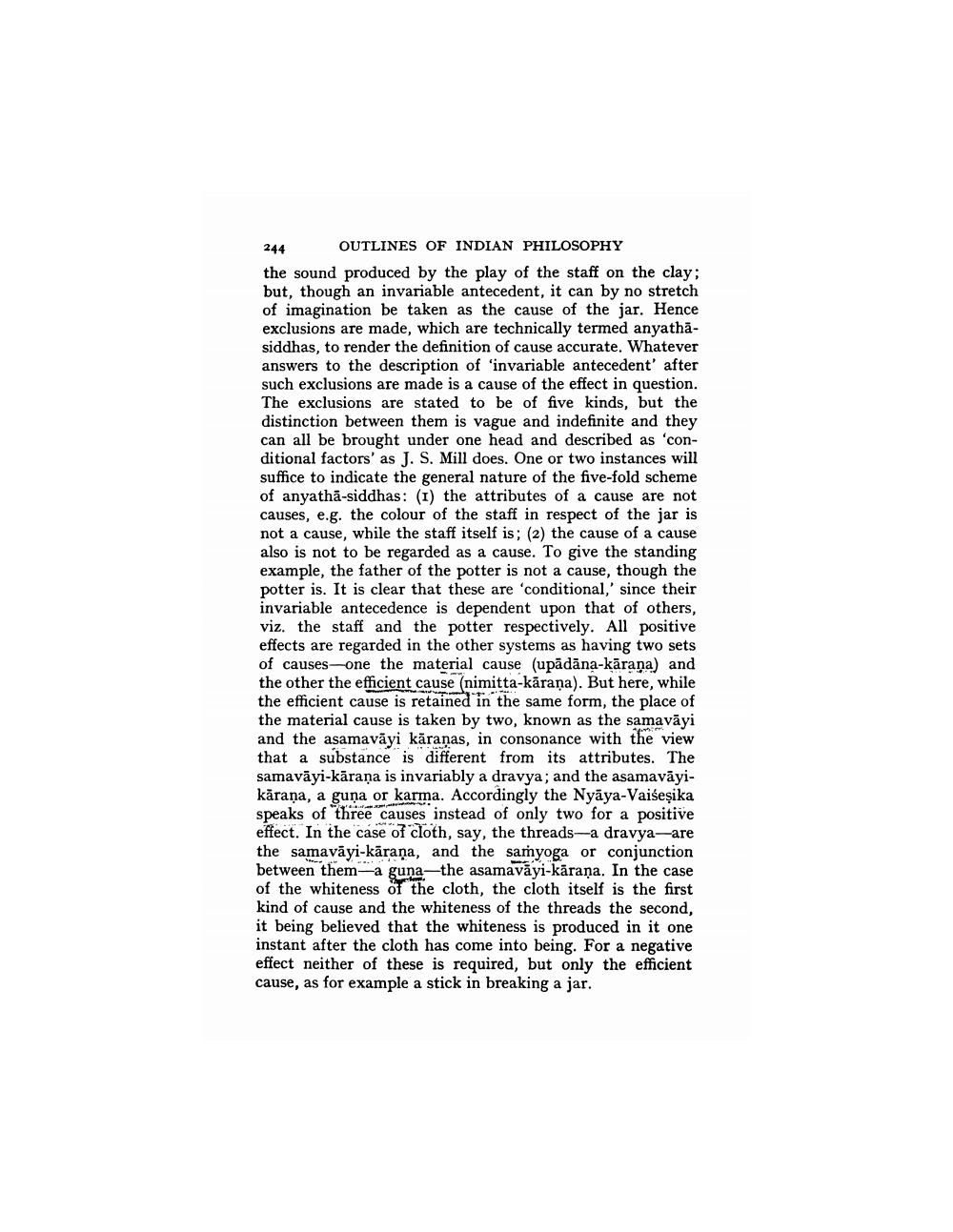________________
244 OUTLINES OF INDIAN PHILOSOPHY the sound produced by the play of the staff on the clay: but, though an invariable antecedent, it can by no stretch of imagination be taken as the cause of the jar. Hence exclusions are made, which are technically termed anyathasiddhas, to render the definition of cause accurate. Whatever answers to the description of 'invariable antecedent' after such exclusions are made is a cause of the effect in question. The exclusions are stated to be of five kinds, but the distinction between them is vague and indefinite and they can all be brought under one head and described as 'conditional factors' as J. S. Mill does. One or two instances will suffice to indicate the general nature of the five-fold scheme of anyatha-siddhas: (1) the attributes of a cause are not causes, e.g. the colour of the staff in respect of the jar is not a cause, while the staff itself is; (2) the cause of a cause also is not to be regarded as a cause. To give the standing example, the father of the potter is not a cause, though the potter is. It is clear that these are 'conditional,' since their invariable antecedence is dependent upon that of others, viz. the staff and the potter respectively. All positive effects are regarded in the other systems as having two sets of causes-one the material cause (upādāna-kāraņa) and the other the efficient cause (nimitta-karana). But here, while the efficient cause is retained in the same form, the place of the material cause is taken by two, known as the samaväyi and the asamaväyi kāranas, in consonance with the view that a substance is different from its attributes. The samavāyi-kārana is invariably a dravya, and the asamavāyikärana, a guna or karma. Accordingly the Nyāya-Vaiseşika speaks of three causes instead of only two for a positive effect. In the case of cloth, say, the threads-a dravya--are the samavāyi-kārana, and the samyoga or conjunction between them-a guna—the asamavāyi-käraņa. In the case of the whiteness of the cloth, the cloth itself is the first kind of cause and the whiteness of the threads the second, it being believed that the whiteness is produced in it one instant after the cloth has come into being. For a negative effect neither of these is required, but only the efficient cause, as for example a stick in breaking a jar.




